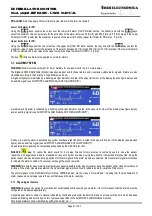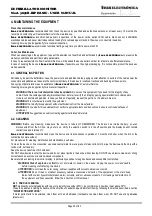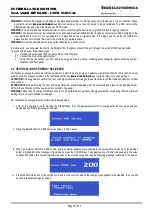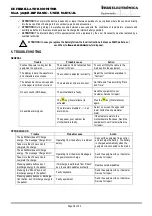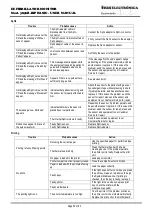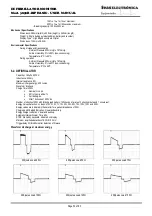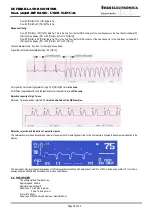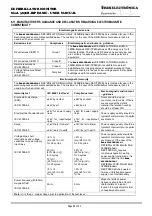
DEFIBRILLATOR MONITOR
Mod. 3850B-BIPHASIC - USER MANUAL
Page 55 of 63
From 80
[1/min]
to 120
[1/min]
: 4s ± 1s.
From 80
[1/min]
to 40
[1/min]
: 11s ± 1s.
Response timing:
From 80
[1/min]
to 120
[1/min]
: 3s ± 1s. This is the time from the first QRS complex of the new frequency to the time taken to indicate 105
[1/min]
on the display (37% of 80
[1/min]
+ 63% of 120
[1/min]
).
From 80
[1/min]
to 40
[1/min]
: 6s ± 1s. This is the time from the first QRS complex of the new frequency to the time taken to indicate 55
[1/min]
on the display (37% of 80
[1/min]
+ 63% of 40
[1/min]
).
Tachycardia alarm time: 3s ± 0.5s, for the signal shown below.
Signal B2: ventricular tachycardia 2mVpp, 195
[1/min]
.
For signal B1: ventricular tachycardia 1mVpp, 206
[1/min]
the time is the same.
For different amplitudes of B1 and B2 (half and twice) the alarm time is still the same.
Rejection capacity of high T wave
Maximum T-wave amplitude rejected: 1.2 times the amplitude of the QRS complex.
Detection, rejection and indication of pacemaker pulse
The cardiotachometer has a detector and rejecter of pacer pulse for measuring heart rate. In the next picture is showed the pacer pulse indication in the
display:
This equipment may reject pacemaker pulses of the following characteristics: with amplitude of ±2mV to ±700mV and a pulse width of 0.1ms to 2ms,
anyway keep the patients with pacemaker under close surveillance.
6.4. RECORDER
The writing method: Thermal array.
Registry speed: 25mm/s.
Register
mode:
keyboard.
Resolution - Y Axis: 8 dots per mm.
X Axis: 16 dots per mm.
Print width: 48mm.
Paper type: Width 50mm and maximum diameter 45mm.

